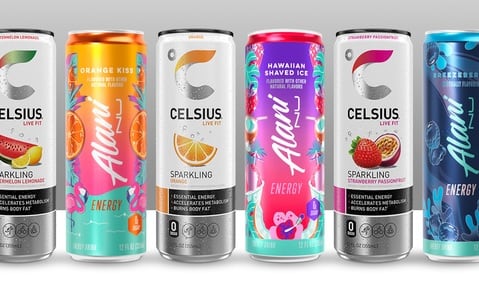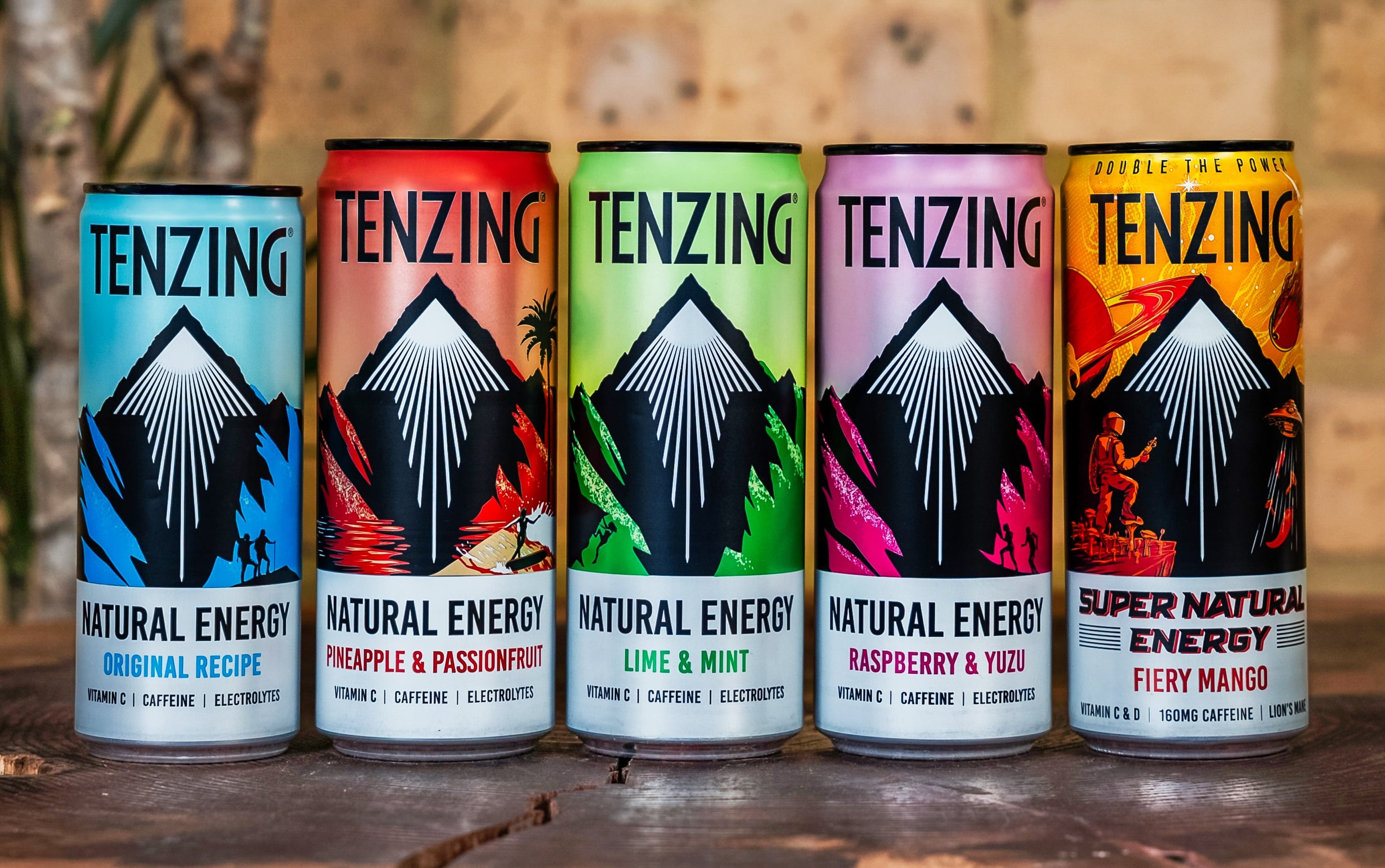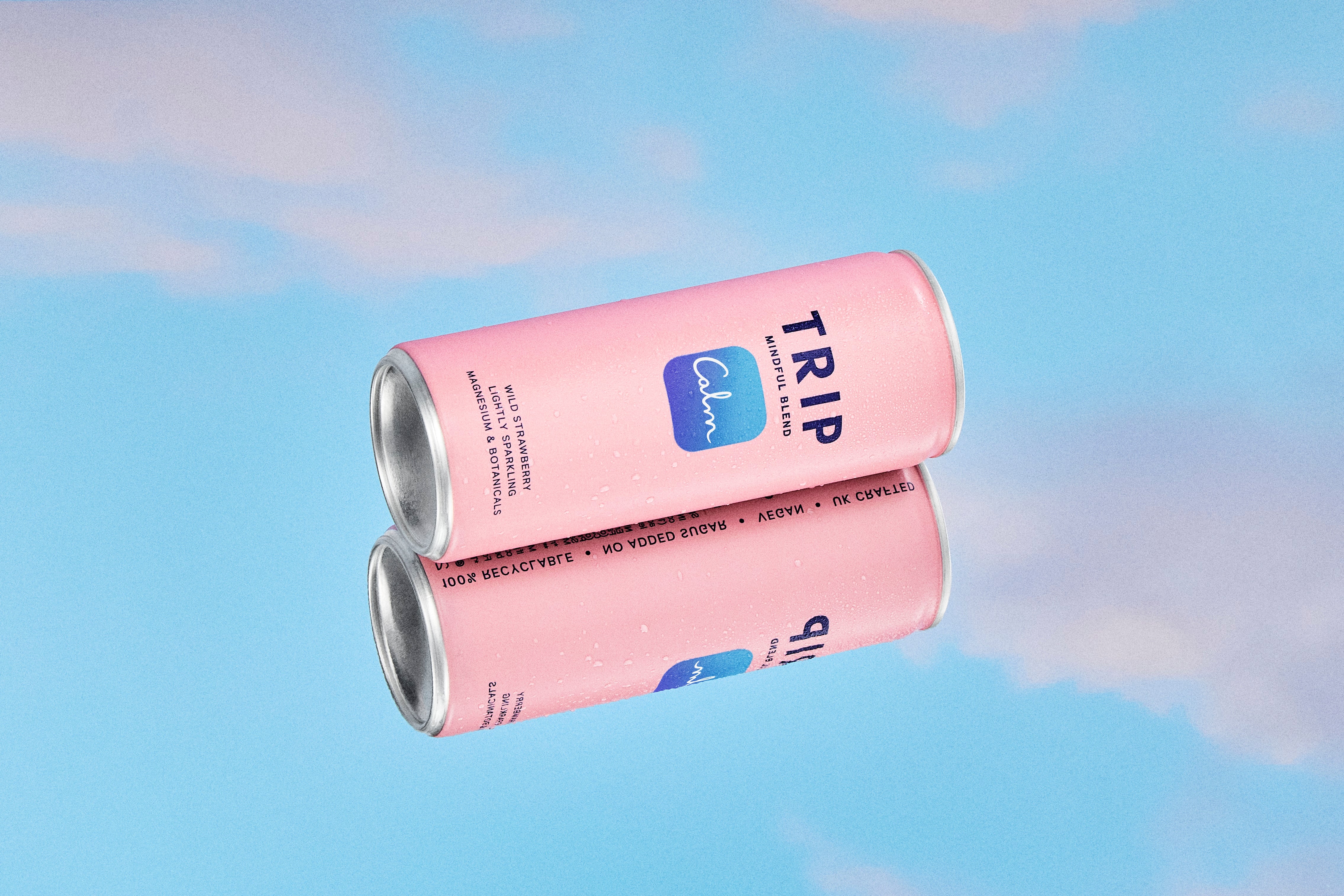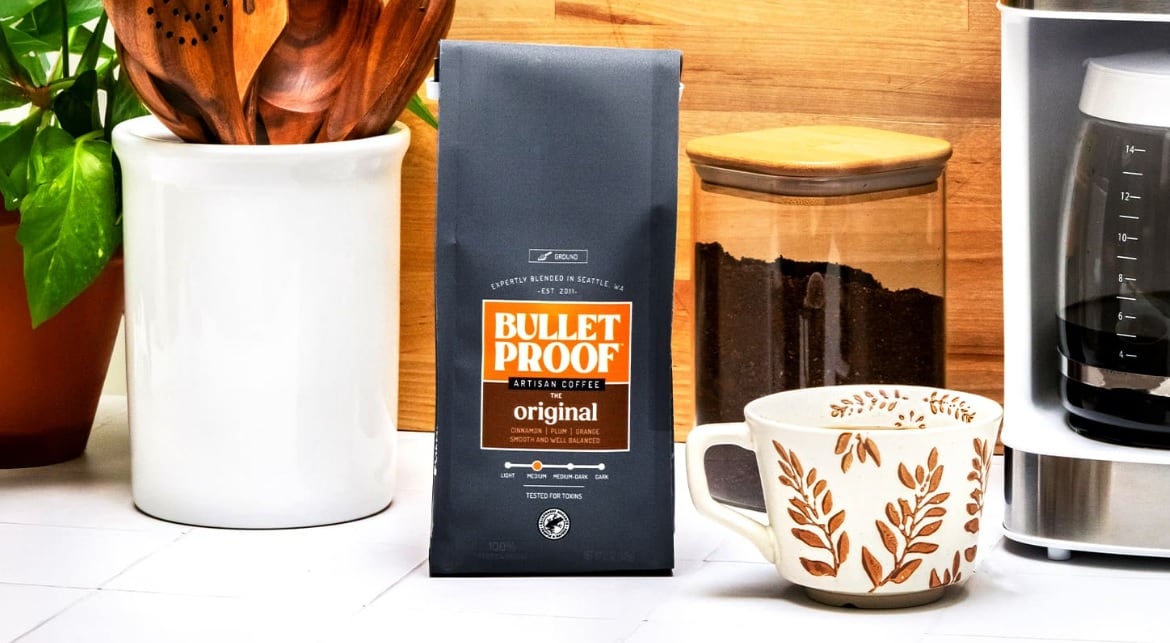For decades, the energy drink category was defined by the likes of Monster and Red Bull. Today, entrepreneurial brands are challenging the big guys: responding to consumer demand with cleaner ingredients and healthier vibes... yet still delivering that much-needed boost of energy to power consumers through their busy days.
Known also as ‘clean energy’ or ‘natural energy’, the goal of these brands is clear: redefine the energy category as we know it.
What is a better-for-you energy drink?
Energy drinks positioned as ‘clean energy’ or ‘better-for-you’ now include a host of brands such as Celsius, Alani Nu, Zoa, Tenzing and more.
What better-for-you energy drinks have in common is a move away from energy drinks of the past: which are defined by their high sugar levels, high calorie counts and artificial ingredients.
After that, the definition is wide-open and shaped by what consumers are looking for.
“In our view, a better-for-you energy drink delivers 100% plant-based, functional energy with low calories and no compromises,” said Huib van Bockel, founder of Tenzing, the UK’s first and best-selling better-for-you energy drink brand which launched in 2016.
“That means using real, recognizable ingredients with proven benefits, while avoiding artificial ingredients, artificial sweeteners, synthetic caffeine, excessive sugar, and ultra-processed additives.”
To put it another way: clean energy is ‘not just about what’s in the can, it’s about what’s not in there,’ explains van Bockel.
“Too many brands use wellness, zero sugar or natural claims while still relying on artificial ingredients. If you need a chemistry degree to decode the label, it doesn’t belong in this space.”
And in 2025, the demand for clean energy is transitioning from a niche category into the mainstream centerpiece.
“The modern consumer continues leaning into wellness-minded practices, especially as it relates to food and beverage choice, and these evolving preferences will continue to shape the energy category,” said Kyle Watson, chief marketing officer of US better-for-you energy rising star Celsius.
“Now more than ever, taste, ingredients and functionality are top of mind for consumers.”
Growing an audience: flavor, lifestyle branding, new audiences
Another aspect that defines the better-for-you energy category is a shift away from the classic positioning and target audience of traditional energy drink brands.
Whereas traditional energy drinks have focused on the young, male, active consumer, better-for-you energy drinks see the potential to reach anyone, anywhere. So the key question is how to get to new consumers who don’t currently give the energy drink category much thought.
Flavor has been integral to the energy drink category for decades, and the better-for-you segment is no exception.
That starts with the fundamentals of having a drink that tastes good: a necessity for any beverage brand.
But then it’s also a way to entice people to come over to the category, says Tracey Bien Schenck, senior director, marketing of non-alcoholic brands at Molson Coors.
The company has recently taken a majority stake in better-for-you energy drink Zoa (a brand co-founded by Dwayne ‘The Rock’ Johnson) as its first foray in the space, as it builds up its non-alcoholic portfolio.
Keeping flavors familiar and approachable is a great way to attract people to the category: jumping from, say, a lemon-lime soda to Zoa’s lemon-lime energy drink.
“The category is very flavor-driven,” she said. “And it’s a really great way to introduce new consumers to the brand. Flavor is a key driver for people liking a product or even just pick it up to start with.
“And of course, people want the drink to taste good!”
Red Bull and Monster still dominate
Red Bull and Monster still dominate the energy category (in the UK, worth more than 60% of sports and energy drinks combined).
And what's more, they're still growing (up 12.1% in value over the last year in the UK).
But the energy drink category overall is growing, opening up space for alternatives as well. The question is whether these better-for-you drinks will accompany Red Bull and Monster: or start to eat into their market share. Or will Red Bull and Monster innovate around new trends? (zero sugar having already been a core part of their portfolios for many years now)
Energy for all
Another key shift comes from the branding and marketing behind better-for-you energy drink brands.
Celsius, for example, underwent a major brand shift from a weight loss brand to a ‘live fit’ lifestyle beverage brand: propelling it into the mainstream. The result? It became a billion dollar brand in 2023 and now has a cool 864k followers on Instagram.
It’s put a lot of effort into this: building communities with brand ambassadors and social media efforts and athletics partners.
Better-for-you energy drinks also spy an opportunity to target an audience far away from the traditional energy drink brands: women.
The energy drink category has long been defined by masculine branding, colors, flavors and formats. But women also have high energy demands: whether that’s for work or the school run or multitasking their way through the day. And they’re also more likely to be discerning and health-conscious about what they put in their bodies.
Some brands, such as Alani Nu, have made it their mission to target this audience. Founded in 2018 by entrepreneur, trainer and influencer Katy Hearn, the female-focused brand is clearly targeting women consumers with its bright, pink, purple or otherwise flowery decorative cans.
For other brands, such as Celsius (which bought Alani Nu this year for $1.8bn), it’s reaching out to female consumers in more subtle ways.
Its packs have a clean white background and fruity images: far away from the traditional bold, dark cues on masculine energy drink cans. On social media and with different brand partners, it has made a point to speak to both man and female communities.

Whether on packaging or social media, it’s been important for the brand to reach out to women while keeping a neutral feel and ensuring it doesn’t isolate men, either (in fact, the brand’s audience now comes in at around 50/50 male/female).
At the end of the day, it’s about meeting consumers where they are, says Watson of Celsius.
“The greatest opportunity in the energy category exists in providing meaningful innovation, especially at key moments where consumer demand, taste preferences and wellness priorities intersect,” she said.
“As illustrated by our recently launched LIVE. FIT. GO. campaign, a comprehensive understanding of what energy means to people, and its role in everyday lifestyles, will be integral as consumer preferences continue to evolve, better enabling brands to meet consumers where they are, and provide the right energy when it’s needed most."
Challenging pre-conceptions
Despite all the opportunity, one challenge the category does still have to overcome is the pre-conceptions and negative images that traditional energy drinks have built up over decades, says van Bockel of Tenzing (the brand claims a #4 spot in the UK energy drink market overall).

“The biggest driver in the energy drinks sector right now is the demand for real flavor, real ingredients and a growing rejection of ultra-processed foods,” he said. “But a key challenge is changing entrenched habits in a category long dominated by legacy brands. Many consumers still associate energy drinks with synthetic ingredients, aggressive branding, and unhealthy side effects.”
Energy boost
Caffeine is already a centerpiece of the category: and brands have already been turning to natural sources instead of artificial ones. But what else can brands provide that go behind caffeine but also promote this idea of energy?
There’s a widening choice of other energy sources. Green tea is a source of natural caffeine, as is matcha, a type of green tea.
Meanwhile, guayusa contains significant concentrations of caffeine and is a rich source of antioxidants. And L-Theanine is an amino acid found in tea and some mushrooms.
Another source of caffeine, yerba mate is native to South America and is used to boost energy levels. And cascara (the fruit pulp of the arabica coffee cherry) offers an unusual taste and gentle caffeine boost.
What about taurine?
Taurine is commonly found in traditional energy drinks as a source of energy production. It is, in fact, a naturally-occuring amino acid found in the body and in certain foods like meat and fish. But the ingredient has repeatedly come under fire and now has a very negative image.
“In energy drinks, taurine is almost always synthetically produced in a lab, not naturally derived,” said van Bockel of Tenzing. “It’s used because it’s cheaper and more scalable. But that doesn’t align with the values of a better-for-you product.”
Unsurprisingly, better-for-you energy drinks steer clear of taurine.
The future is even more functional
The next wave of better-for-you energy will be building on low sugar and natural ingredients and boosting that with other functional ingredients.
Vitamins and minerals have always been a key add-on in the energy drink category, but what else?
Electrolytes is one add-on that’s a natural fit: bringing the sports, hydration and energy categories nicely together. That’s a route that Zoa’s chosen to go down: packing its drinks with electrolytes alongside natural caffeine and B and C vitamins.
And where else could this go? Better-for-you energy drinks are exploring other add-ons: such as fiber. And the sky’s the limit, says Tracey Bien Schenck of Molson Coors: just look at adjacent categories such as soda, where gut health is booming and added fiber is increasingly common.
“I would say this added benefit space is really interesting,” she said.
Within that space, nootropics is one to watch, says Kyle Thomas, chief commercial officer at Nutrabolt, the company behind performance energy drink C4 Energy (Like Celsius, the brand has expanded beyond its initial niche, in this case in active nutrition, and now is encompassing a wider audience).
“Nootropics is a huge opportunity in a number of different categories,” he said.
“For us, at C4, I’d anchor that mental clarity back into performance: so when you think about what are the daily things you have to get done, what are the things that you put into your body that help you perform in the best possible way?
“Well, when you’re at work and you think about some of the mental benefits that either a beverage or some other CPG type brand can provide, I think that’s where nootropics come in. It’s a newer idea, but not new. I think that’s where you’re going to see more and more come into the category, especially with energy drinks. I think that will continue to expand and be an opportunity.”



